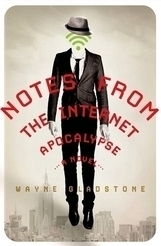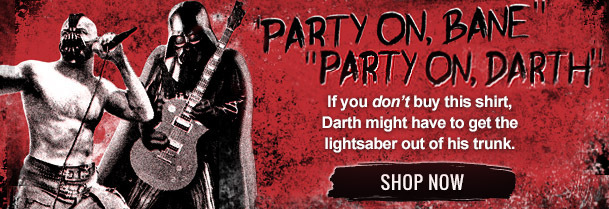4 Famous Movies With Deceptively Complex Symbolism

I know you're reading this article online. And I know it's in list form and features at least a couple of well-known movies, but this is not a normal Internet article, because today we're talking literary devices. Y'know, those things you ignored in high school English class? Don't be scared. A "literary device" is really just a fancy phrase for a storytelling trick -- things like foreshadowing, metaphor, and unreliable narrators are all just writers' tools.

This is another writer's tool, but I already wrote that column.
My favorite literary device is a very specific form of symbolism. How specific? Well, I'm pretty sure it doesn't have a name. It's when a symbol transforms to represent redemption. The object that best reflects the protagonist's sin or obstacle is repurposed to represent redemption. Do you follow? No?
Yeah, it's very hard to explain in a vacuum. Examples help, and to make sure you don't leave this article for a list of the best breasts in science fiction, I'll try to illustrate my point with movies instead of books.
So here are four movies that define my favorite, previously unnamed literary device: the "Trans-Redemptive Symbol."

Yep. The Trans-Redemptive Symbol. When you find it, you get to name it!
The Bottle Flask in Children of Men
In 2006, Alfonso Cuaron made my favorite of his films: Children of Men, a science fiction thriller about a world where there are no children. For reasons unknown, the entire world is barren, and civilization faces constant nihilistic rebellion. Only the UK, by imposing martial law, has maintained order.
The First Appearance: Drunken Apathy
Clive Owen plays Theo Faron, a former activist who has become a drunken bureaucrat. Since the death of his son and subsequent divorce, he no longer cares about society. From his first introduction into the film, he carries a flask-shaped liquor bottle.
Booze starts his day because he simply doesn't care anymore. He doesn't want to feel. He doesn't want to be a part of anything. Faron is even indifferent to the reports of the world's youngest person dying at the place where he gets his coffee. And he only wants the coffee so he can add booze to it.

Finally, something to get rid of that char-burnt Starbucks taste.
The Trans-Redemptive Symbol: Compassion and Action
Later in the movie, Theo gets drawn into a resistance movement -- that he must also flee -- as he safeguards the life of perhaps the only pregnant woman on the planet. When that woman goes into labor, Theo must help deliver the child in a filthy room, and does his best to create a sanitary environment. After a quick wash, he pours out his liquor bottle to sterilize his hands.
When Theo did not care about others, the flask-shaped liquor bottle represented drunk indifference, but as he becomes involved, that same object transforms to a symbol of compassion. It represents charity and commitment. One object, with two symbolic meanings.

Booze: perfect for medical procedures.
I should also note that while my descriptions sound somewhat hamfisted, the movie is incredibly subtle. If you watch the embeds, you see the appearance of the flask is obscured in both scenes. Cuaron doesn't hit you over the head with this. Like all good symbolism, it's only articulating whats it represents that makes it sound corny.
Christopher Lloyd's Clipboard in The Dream Team
Hey, remember that Michael Keaton movie The Dream Team? No? Oh. Hmm, wait, pretend you're over 30. Remember that Michael Keaton movie The Dream Team? Yeah, me too. What a fun '80s movie.
Anyway, the movie is about a bunch of mental patients who take a trip to New York City and end up having to solve the murder of their therapist. Keaton has anger management issues, Peter Boyle thinks he's the messiah, and Christopher Lloyd has some sort of obsessive-compulsive disorder where he must control all his activities. He carries a clipboard.
The First Appearance: Obsessive-Compulsive/Controlling Behavior
Please don't correct my diagnosis with some recitation of the DSM-V, but basically, Christopher Lloyd must control and organize all situations. And that behavior is symbolized by the clipboard that he carries everywhere. He carries it even though, at this point in the movie, he is unemployed and dysfunctional. He has no actual responsibilities.
The Trans-Redemptive Symbol: Love and Letting Go
I don't have a clip, but later in the movie, Christopher Lloyd's character visits his wife and daughter, who he's not seen since being institutionalized. His daughter shows him her drawings. They're messy, and Lloyd gives her his clipboard to help her organize them. Yes, the initial impulse is to organize clutter, but in giving away the clipboard, he is giving up his attempts at control. The interaction with a loved one has helped cure him. His illness has been tempered by love.
The House in Up
Well well well, look who included a movie everyone's heard of. This uppity prick (I'm pointing two thumbs back at me). Yep, we all know Up, and I was sure to include it for that reason, so I hope you'll forgive me when I tell you this is the shakiest entry on the list. Also, because Disney polices the internet like a mofo, I don't really have any good clips for you.
The First Appearance: Violently Clinging To The Past
Anyway, as everyone knows, Up tells the story of an old widower named Carl who steadfastly protects his little home, because it is his only attachment to the memory of his deceased wife. They bought and made the home together, and dreamed of one day visiting the mystical tropical location of Paradise Falls. He refuses to the sell the home to developers, and when one construction worker accidentally bumps into his mailbox, he gets violent. That episode leads to his court-ordered sentencing to a rest home. So Carl fills his house with balloons and flies away.

Stop crying, you sissy. Oh wait, sorry, that's me.
The Trans-Redemptive Symbol: Love and Letting Go
I bet you just noticed that the house becomes the same thing as Christopher Lloyd's clipboard. Nice close reading skills! You should have been an English major like me! Then we could both be working day jobs while we wait for our novel to become the next Harry Potter!
Anyway, you've seen the movie. Carl becomes friends with a young boy, who finds himself in trouble when a very ancient (yet surprisingly spry) world explorer turns manically insane. Long story short, in order to save his new pudgy boy friend, Carl must release his house and let it fall through the clouds. He gives up the house out of compassion and love. And after literally letting go of living in the past, Carl says it's "just a house." He has grown as a character. Furthermore, as the movie ends, we see where the house lands:

That's right. Paradise falls. Awwwwww.
The house, which started as a nesting ground Carl created with his true love, became a symbol of him refusing to accept loss. By actively letting go of his memories, the house was able to become what it should have been: a dream he shared with his deceased wife.
The Luggage in Joe vs. The Volcano
Oh, it was going so well, and then I had to end the list with an obscure Tom Hanks movie. "But it's a Tom Hanks movie," I say. "Shut up, Gladstone," you reply, "It's one of only like three Tom Hanks movies no one's ever seen."

Also included in this category: Larry Crowne and The Man With One Red Shoe.
Anyway, Joe vs. The Volcano is a about a sad, pathetic man who's diagnosed with a terminal disease. He accepts an offer from a mysterious stranger to take an all-expenses-paid vacation to an exotic tropical isle where he will go out in a blaze of glory, sacrificed to a volcano.
The stranger also pays for all his luggage for the journey. It's kind of a big deal. It gets its own scene.
The First Appearance: Giving Up
It might be super nice luggage, but Hanks is still buying it on his path to suicide. The luggage is just steamer trunks for him to pack his stuff in as he accepts death.

But y'know, they had to repurpose the luggage, because suicide looks awful on a movie poster.
The Trans-Redemptive Symbol: Fighting for Life
Anyway, on his way to death, Hanks falls in love with Meg Ryan. Why? Well, it was the '90s. Everyone loved Meg Ryan. But their ship sails into a typhoon and sinks. Having found love, Joe decides not to die, taking his watertight suitcases and strapping four of them together to form a life-saving raft.
Yep, the symbol of his acceptance of death is repurposed to become the symbol of his struggle to survive. Later, adrift and dehydrated aboard this floating luggage, he thanks God for his life -- the life he was eager to waste and ultimately throw away. Really, just sensational luggage.

GLADSTONE'S NOTES FROM THE INTERNET APOCALYPSE IS ON SALE NOW!
After experiencing the joy of purchasing Book 1 of the trilogy, be sure to follow Gladstone on Twitter.
Also, you can get all your Internet Apocalypse news here.
And WATCH A NEW EPISODE OF HATE BY NUMBERS AND HELP GLADSTONE FUND MORE!
For more from Gladstone, check out 3 Modern Satirists Screwed by People Who Didn't Get the Joke and 5 Movies That Don't Get Enough Credit for Being Tearjerkers.
